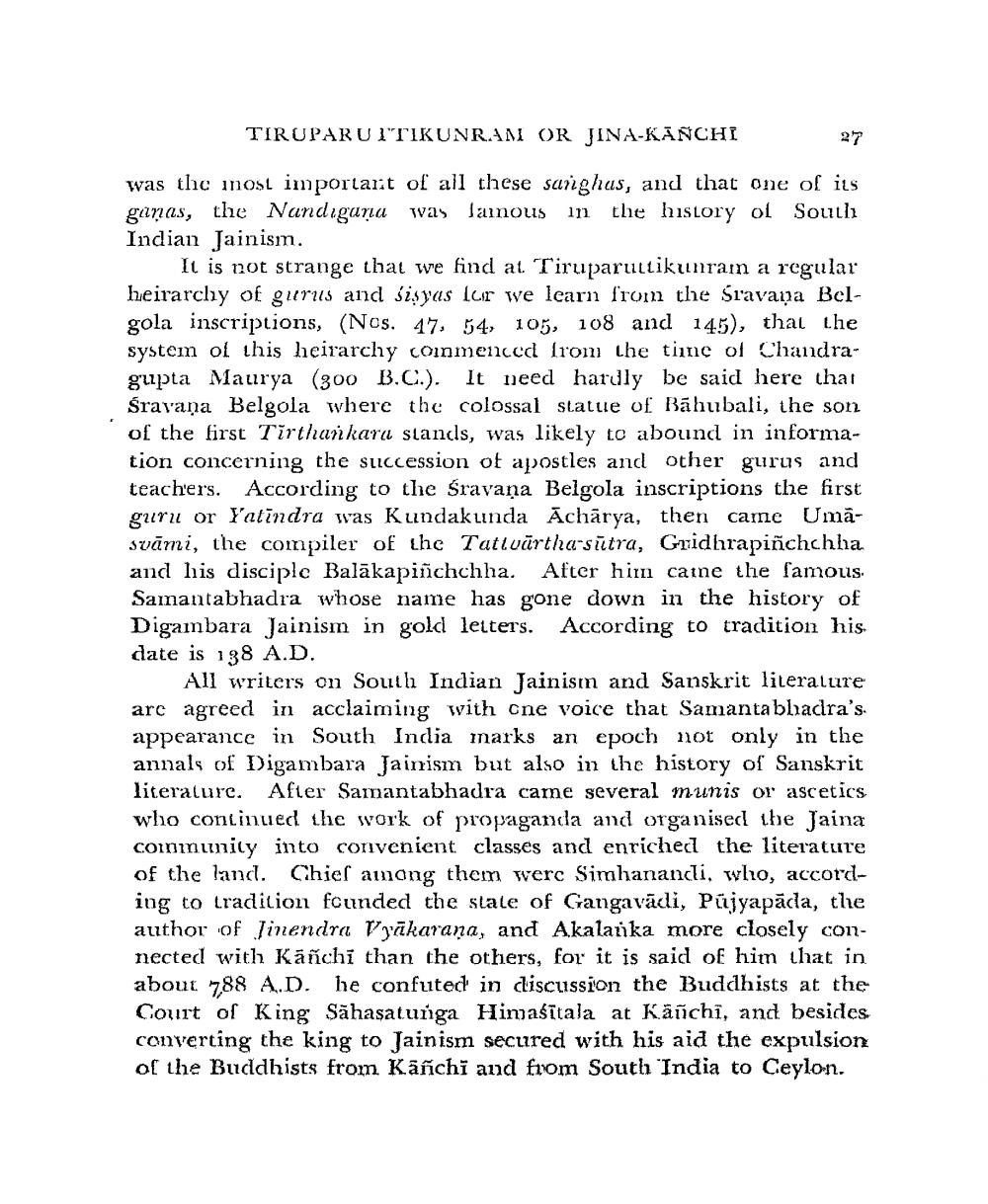________________
TIRUPARU ITIKUNRAM OR JINA-KANCHI
27
was the most important of all these sanghas, and that one of its ganas, the Nandigana was famous in the history of South Indian Jainism.
It is not strange that we find at Tiruparuttikunram a regular heirarchy of gurus and sisyas lor we learn from the Sravana Belgola inscriptions, (Nos. 47. 54, 105, 108 and 145), that the system of this heirarchy commenced from the time of Chandragupta Maurya (300 B.C.). It need hardly be said here that Sravana Belgola where the colossal statue of Bahubali, the son of the first Tirthankara stands, was likely to abound in information concerning the succession of apostles and other gurus and teachers. According to the Sravana Belgola inscriptions the first guru or Yatindra was Kundakunda Acharya, then came Umasvāmi, the compiler of the Tattvärtha sutra, Gridhrapiñchchha and his disciple Balākapiñchchha. After him came the famous. Samantabhadra whose name has gone down in the history of Digambara Jainism in gold letters. According to tradition his date is 138 A.D.
All writers on South Indian Jainism and Sanskrit literature are agreed in acclaiming with one voice that Samantabhadra's. appearance in South India marks an epoch not only in the annals of Digambara Jainism but also in the history of Sanskrit literature. After Samantabhadra came several munis or ascetics
who continued the work of propaganda and organised the Jaina community into convenient classes and enriched the literature of the land. Chief among them were Simhanandi, who, according to tradition founded the state of Gangavadi, Pujyapāda, the author of Jinendra Vyakarana, and Akalanka more closely connected with Kanchi than the others, for it is said of him that in about 788 A.D. he confuted in discussion the Buddhists at the Court of King Sahasatunga Himasitala at Kanchi, and besides converting the king to Jainism secured with his aid the expulsion of the Buddhists from Kanchi and from South India to Ceylon.




